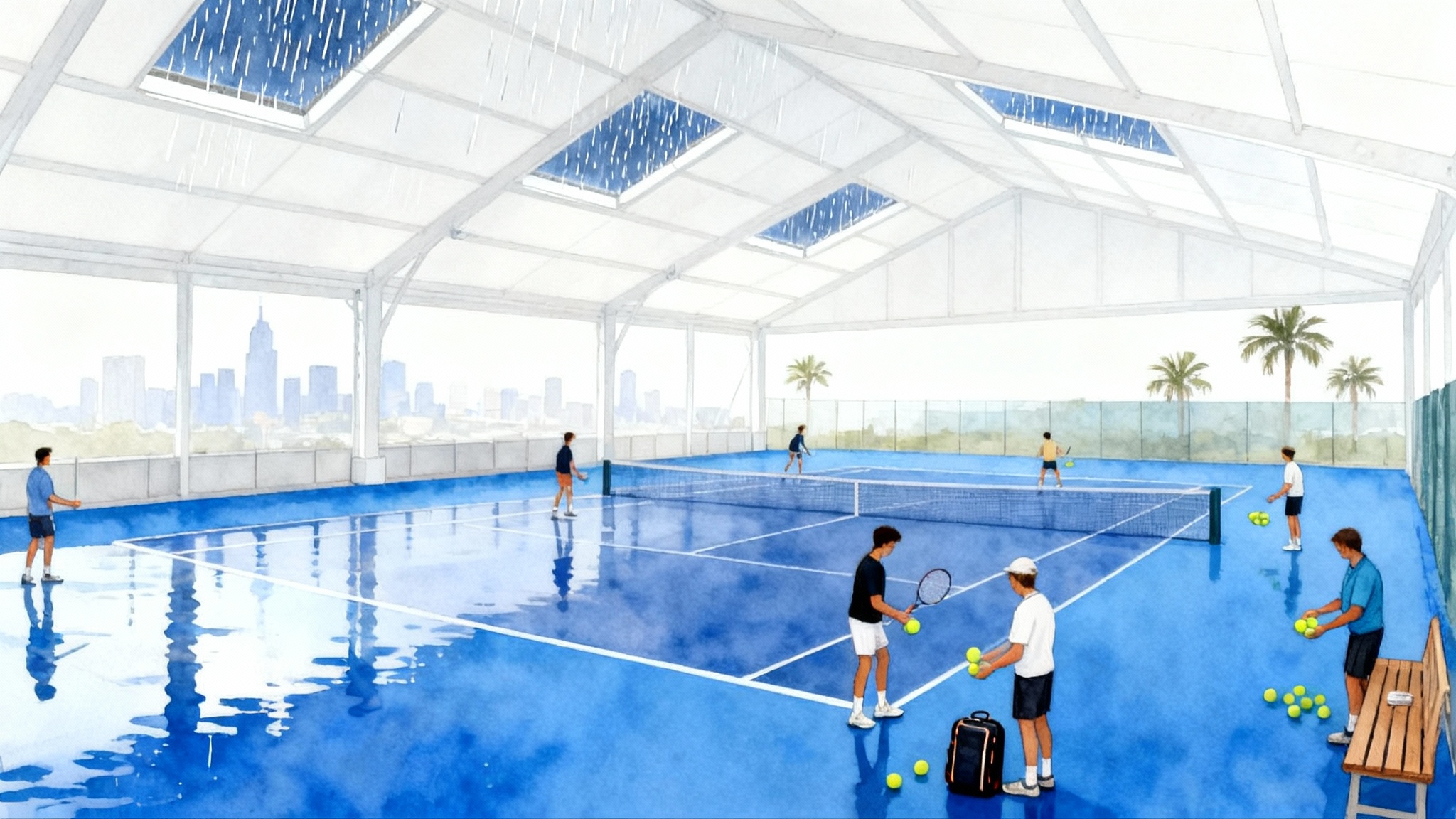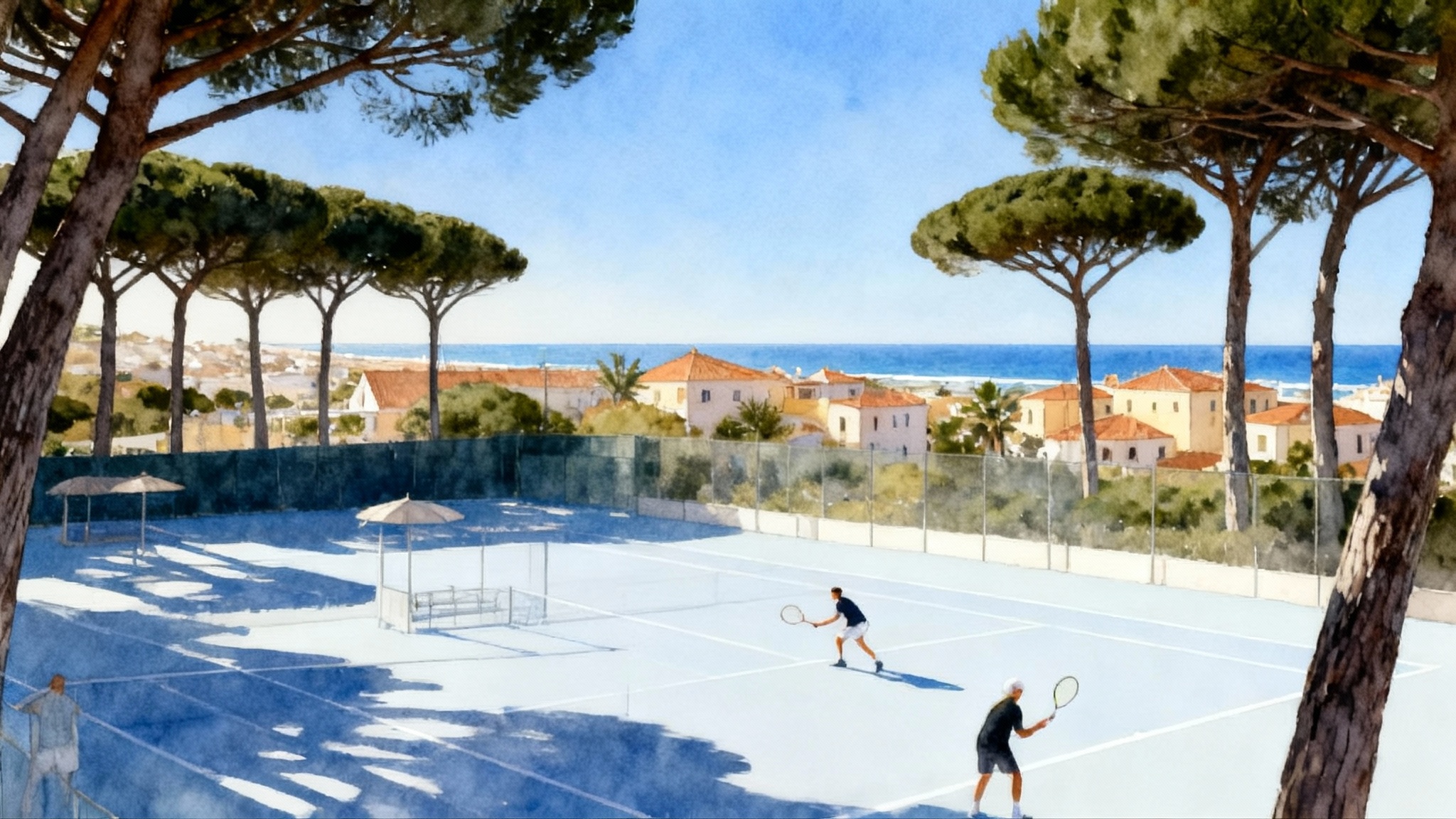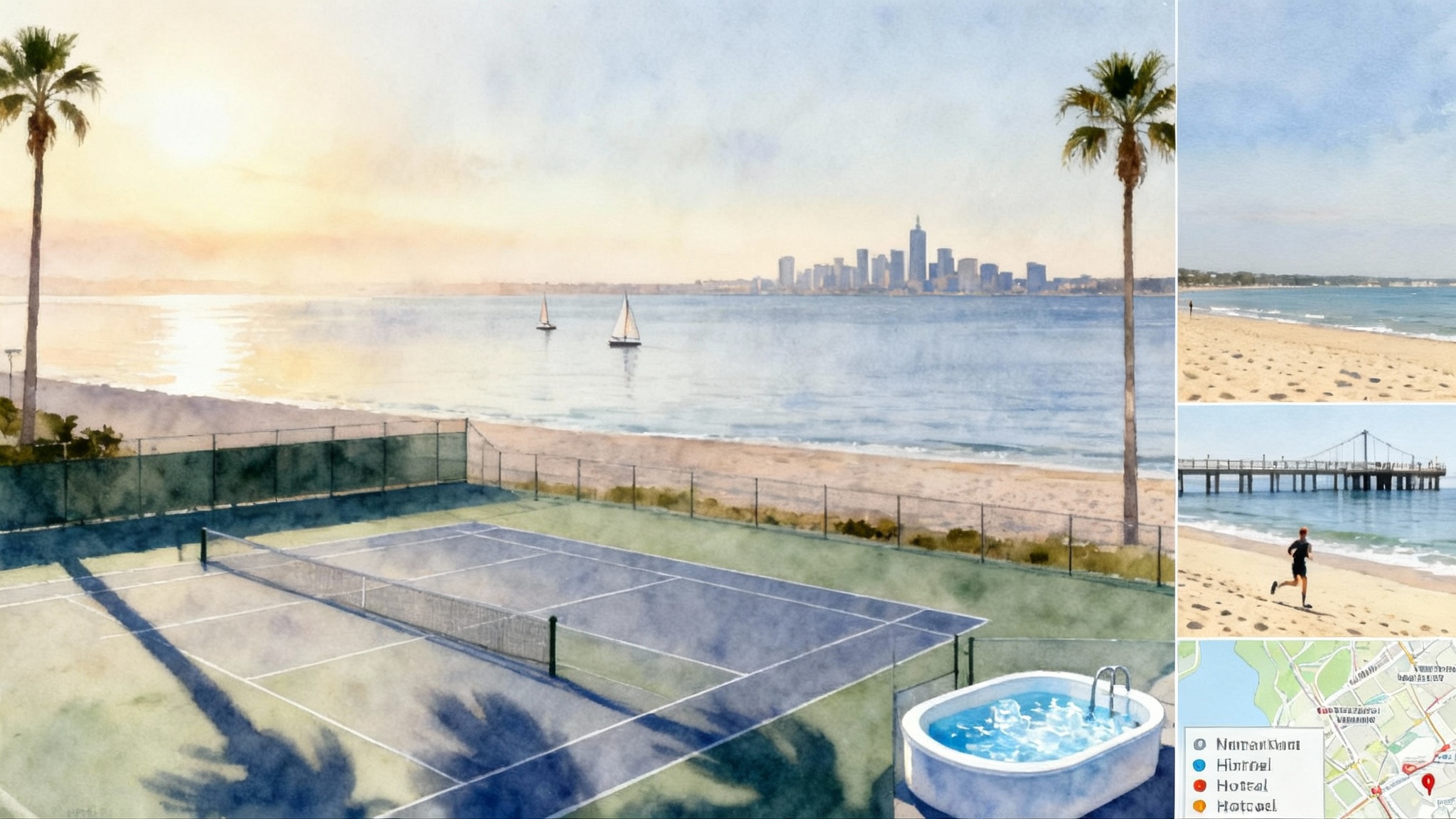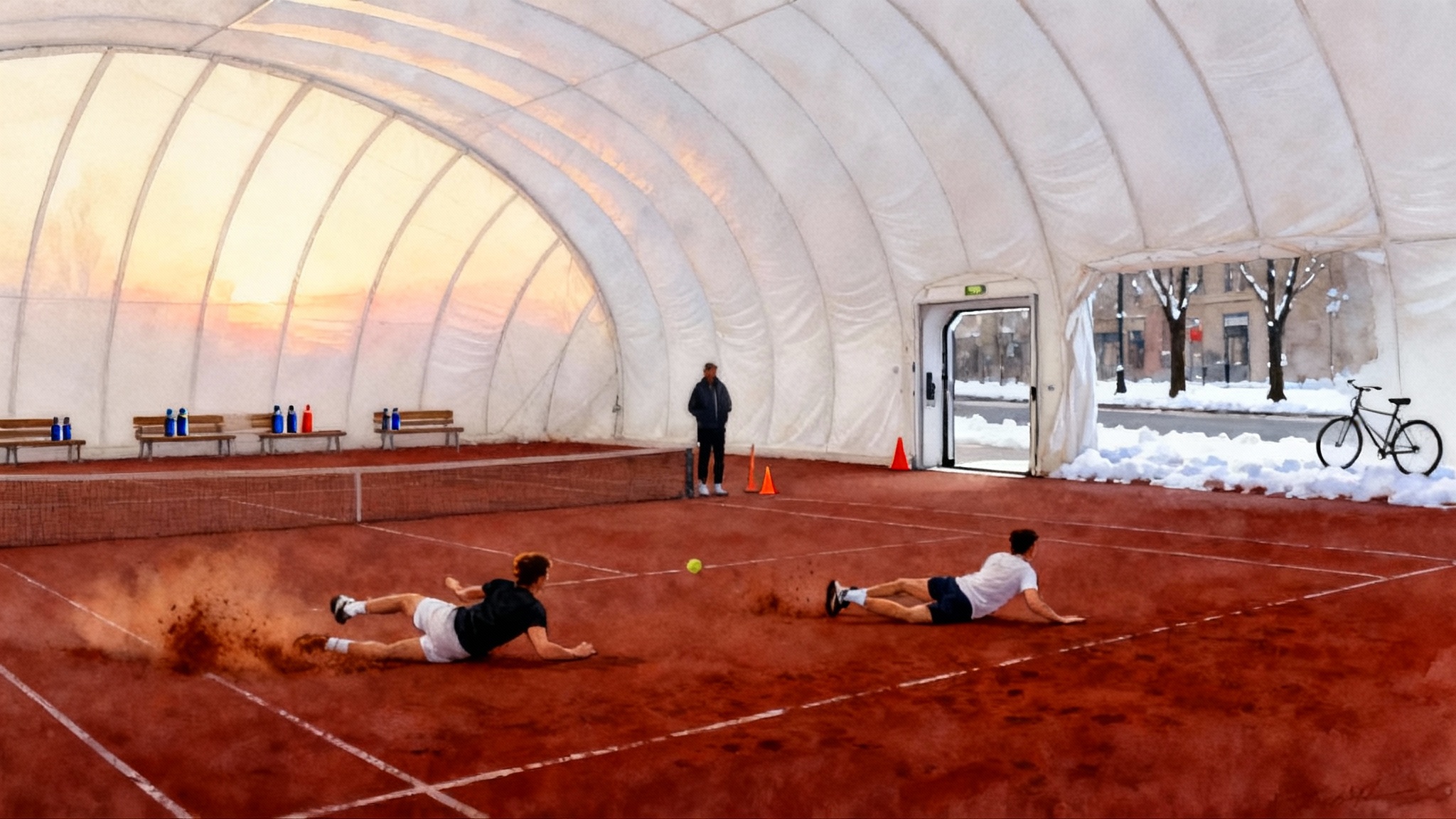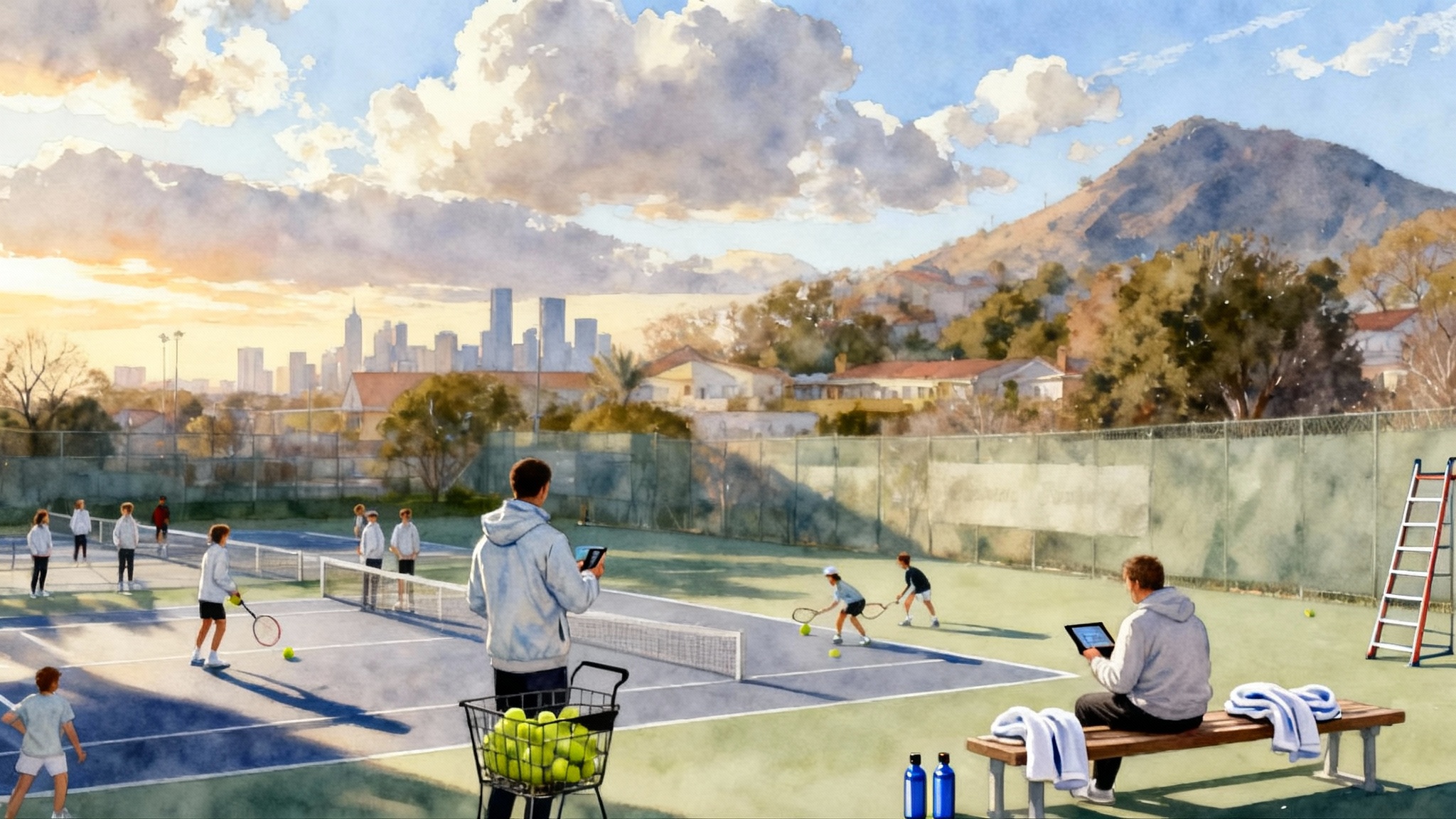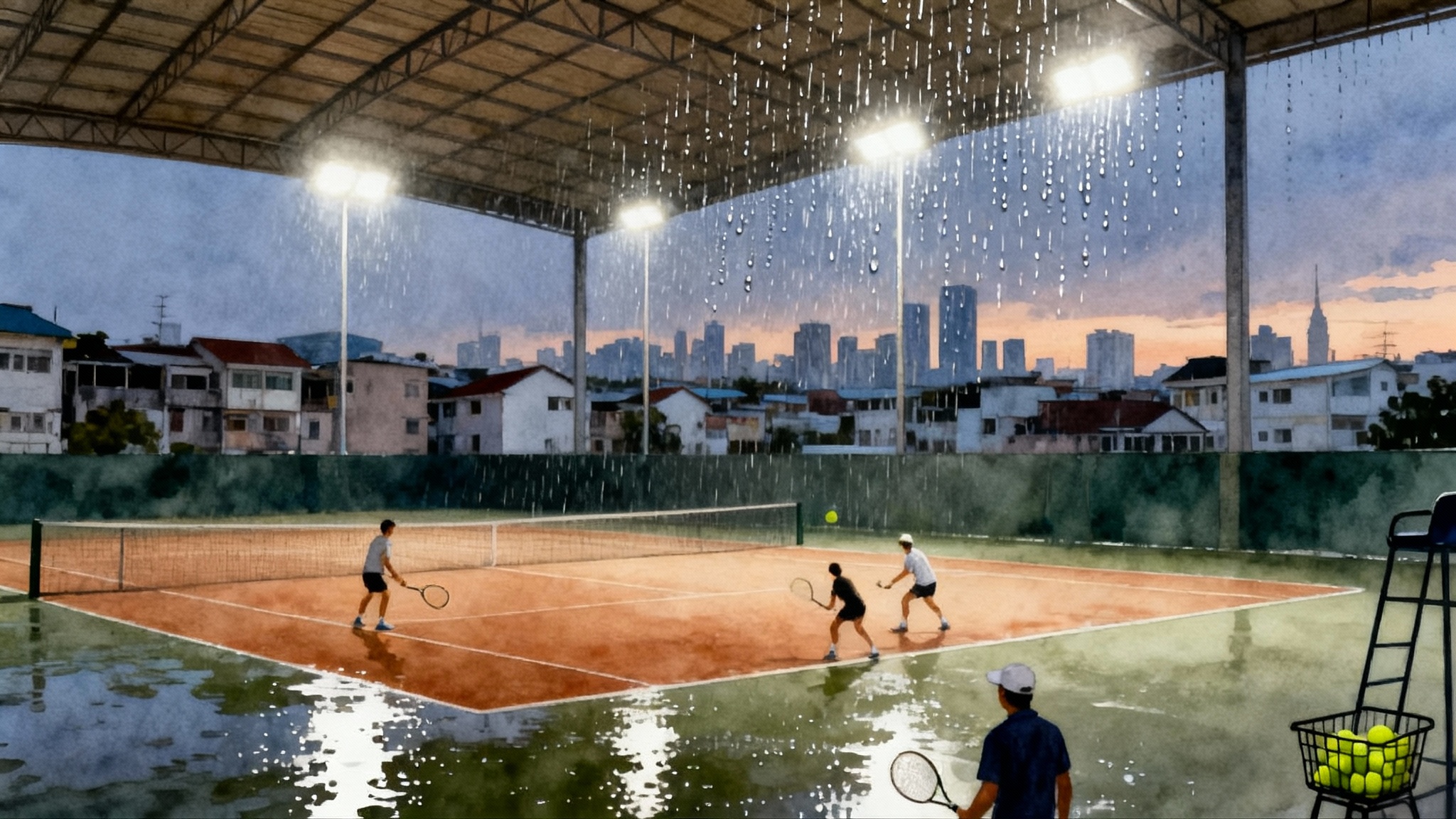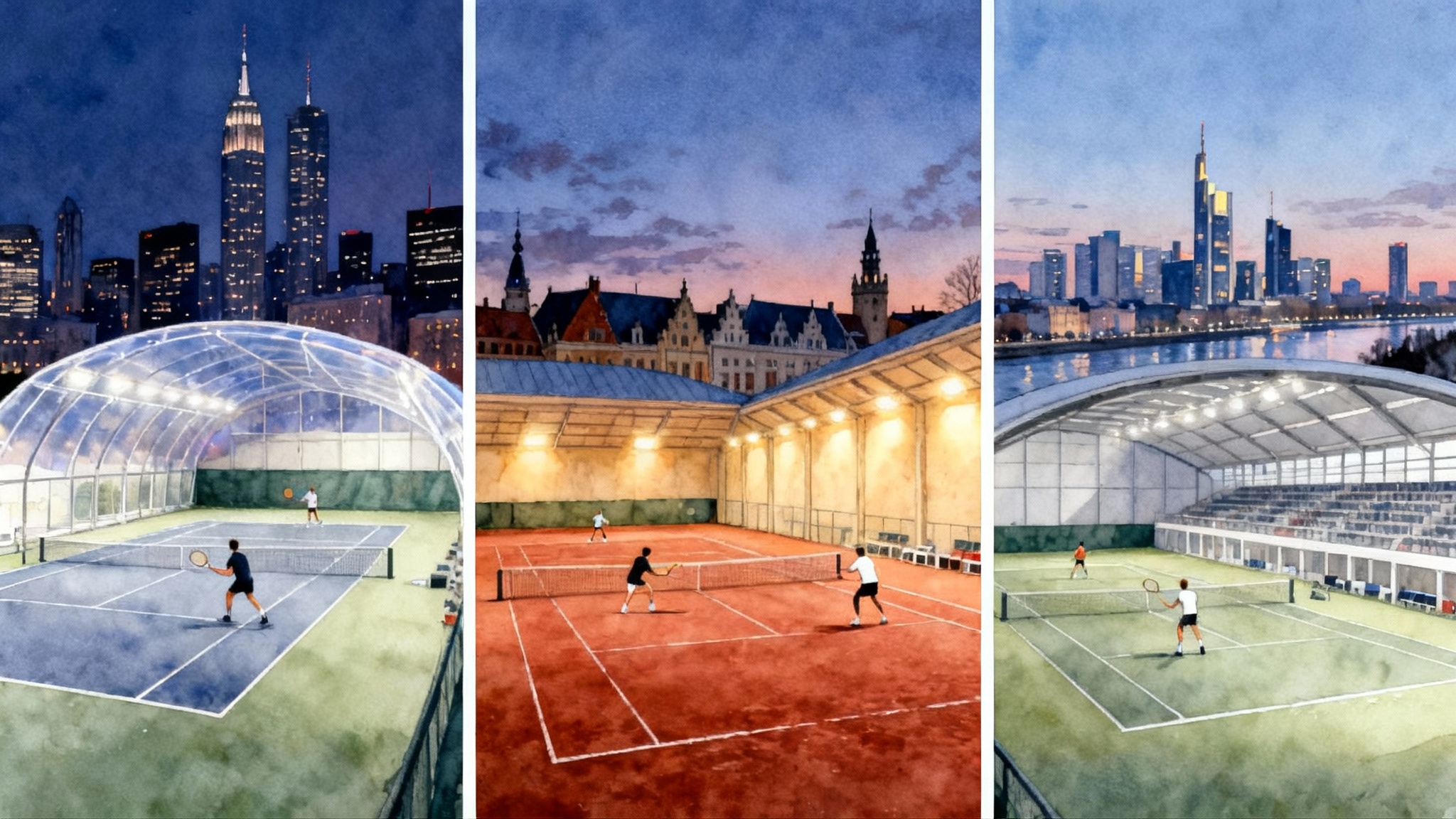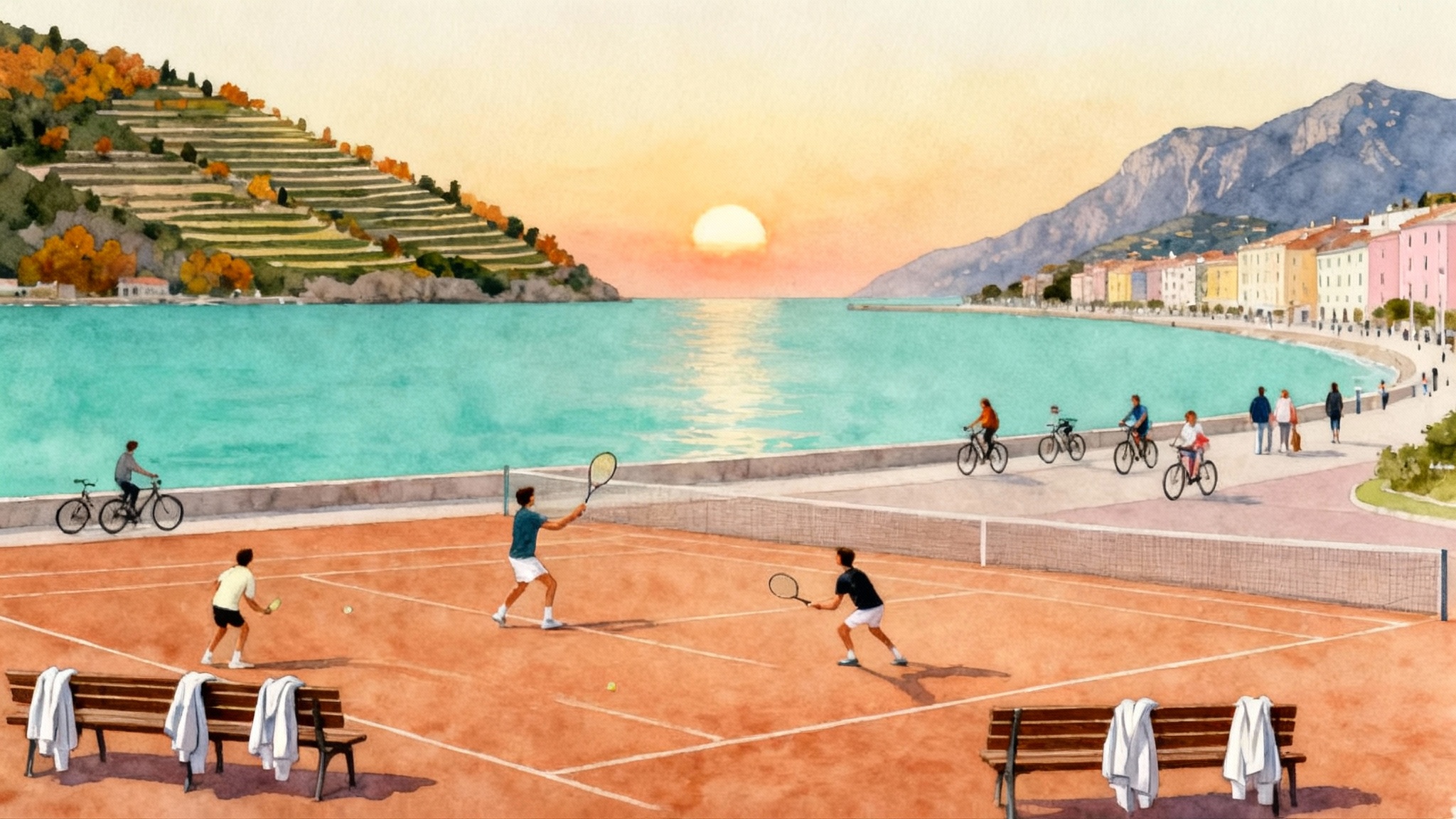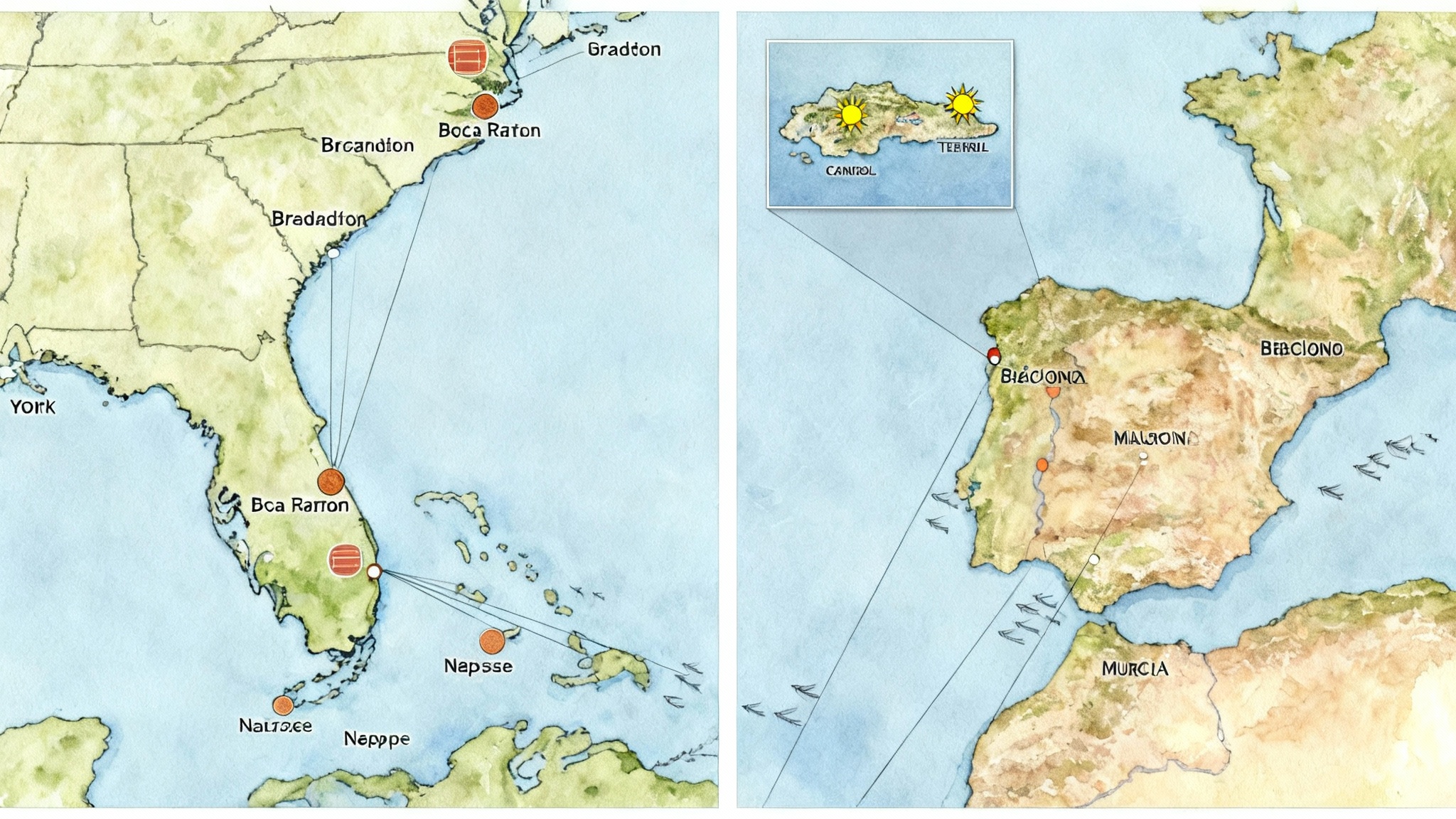Puerto Rico Tennis 2025–26: Best Warm-Weather Base for US Players
A practical, climate-led guide for US players who want year-round outdoor tennis without a passport. Learn the best months by coast, how to plan around hurricane season, sample training weeks, family add-ons, and cost-time tradeoffs.
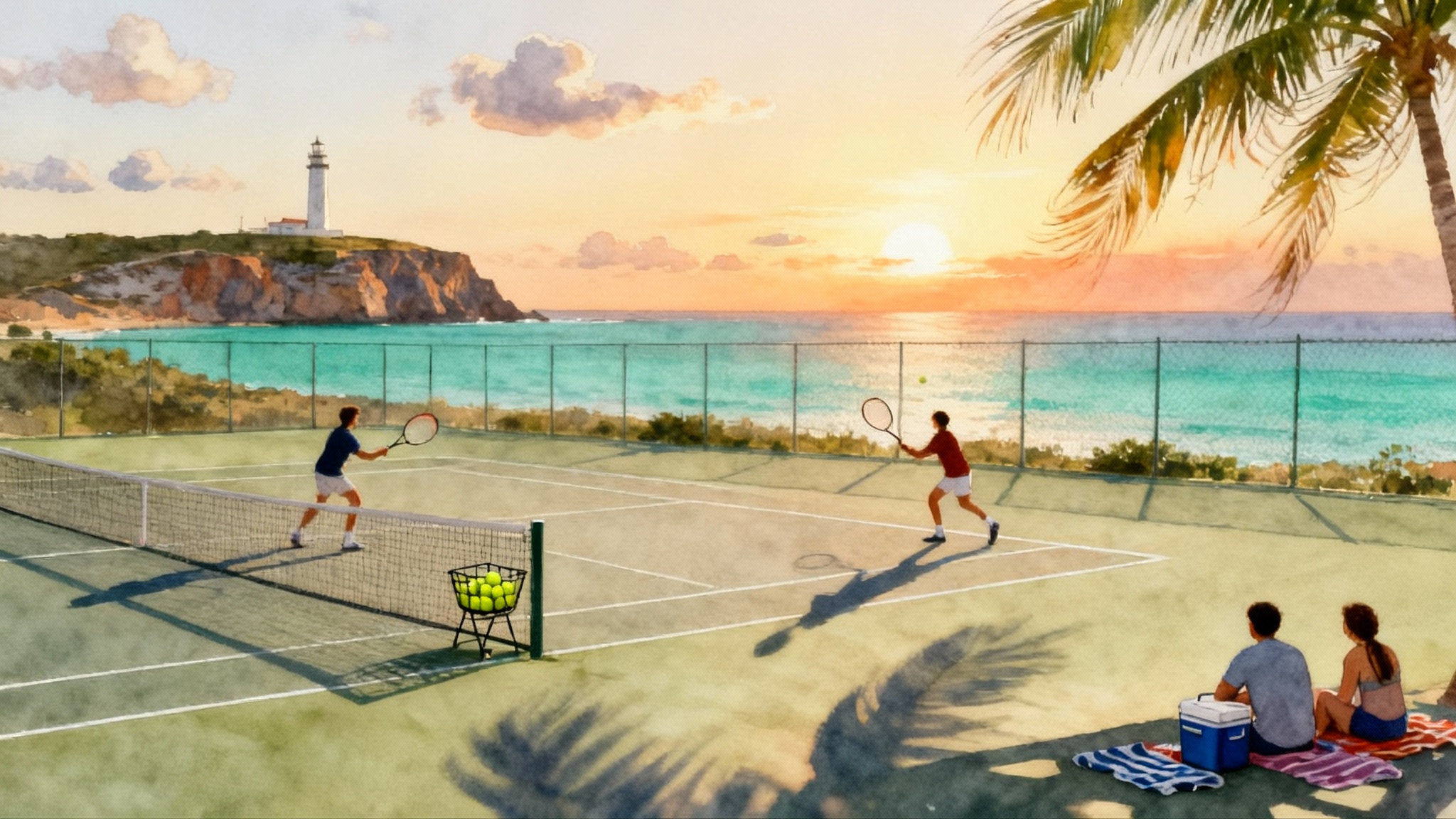
Why Puerto Rico is the easiest warm‑weather base
If you want outdoor tennis through winter and spring, you are usually choosing between Florida, Southern California, or a passport trip to the Caribbean. Puerto Rico gives you the best parts of each. It is domestic travel that uses the US dollar, your phone plan works as if you were at home, rental cars and groceries feel familiar, and US citizens do not need a passport to enter or leave the island. That last point removes stress for families and teams, and it broadens who can join your camp. See the tourism authority’s guidance that confirms that US citizens do not need a passport. For a West Coast alternative, compare our Newport Beach year-round base guide.
Climate is the other headline. Puerto Rico sits in the trades, with warm air, consistent daylight, and reliable sunrise wind that keeps morning courts playable even on humid days. The south and west coasts sit in a rain shadow cast by the Cordillera Central mountain range, which means more dry windows for hitting. The island’s size also works in your favor. If the forecast pops for one coast, you can pivot to another in a half day.
Think of Puerto Rico as a year‑round outdoor gym where tennis is the anchor, and beaches, snorkeling, hiking, and food keep families happy. You can run a serious block of training for a junior pathway or adult team while your non‑players build a vacation around it.
Where to base your camp: Cabo Rojo and the west
The west coast is the island’s dry, golden hour. Cabo Rojo sits near the southwest corner with easy access to Boquerón, Joyuda, and the lighthouse cliffs. The trade winds are steady but not overwhelming, mornings are calm, and the rain shadow is real. Courts dry fast, and you can schedule two sessions daily most of the year with confidence.
Pro Tennis Academy Puerto Rico, based in Cabo Rojo, has emerged as a practical hub for visiting players who want structured coaching and a friendly base of operations. The value is simple. Bilingual coaches understand American school calendars and USTA tournament rhythms, visiting players can plug into local sparring partners, and families get a west‑coast playground between sessions. The academy can assemble custom blocks that balance technical work, point construction, and match play for groups or drop‑ins. Expect straightforward logistics, clear communication, and an emphasis on morning training, which is exactly what the climate rewards.
Best months by coast
The dates below reflect typical conditions rather than guarantees. They are meant to help you pick a base and plan daily windows.
- North coast, San Juan to Dorado: December through May offer the most comfortable combo of temperature and breeze. Summer brings more humidity and passing showers, which is fine for early sessions but harder for long mid‑day blocks. Winter trades can spike afternoon wind, so lean into mornings.
- East coast, Fajardo and Humacao: Trade‑wind showers are more common, but mornings are still very playable. October through April are prime. Summer is lush and beautiful, though you will work around pop‑up rain.
- South coast, Ponce and Guánica: Dry side. November through April is excellent, and even summer often holds long dry stretches. Heat management matters, so go early, then late.
- West and southwest, Mayagüez, Rincón, Cabo Rojo: The most reliable two‑a‑day windows. December through April is almost automatic for morning sessions. Summer still works with early starts and an evening hit. Surf season in winter adds a bonus for cross‑training.
If you are scheduling a multi‑week block, treat mornings as sacred and make afternoons flexible. The island rewards the coach who is up at sunrise and leaves optional sessions for late day.
Hurricane‑season contingencies that actually work
The Atlantic hurricane season runs from June 1 to November 30. Plan for it, do not fear it. The payoff is lower airfare and more lodging options with quieter beaches. The key is to structure your week with weather‑smart decision points.
- Build a weather cadence: lock in morning sessions by 6:30 or 7:00, hold a midday gym and video slot indoors, then add a 4:30 to 6:30 optional session if conditions allow. The big storms telegraph themselves days ahead.
- Use refundable rates and flexible inventory. Hold two lodging options if you are traveling with a team. Keep rental cars cancellable. This keeps your choice set wide if you need to pivot coasts.
- Fold in rest days that can slide. Place a snorkel morning or a bio‑bay night in the middle of the week. If weather compresses your tennis hours one day, you will still leave with a full training volume by week’s end.
- Watch the official forecast, not rumor. For Atlantic timing and probability maps, rely on NOAA hurricane season updates.
Most weeks in late summer and early fall run as planned. When a true system approaches, you will know in time to reschedule or shift your base south or west where showers are often weaker.
Feature base: Pro Tennis Academy Puerto Rico, Cabo Rojo
What visiting players appreciate most is the academy’s ability to adapt. A sample day for a mixed group might look like this:
- 6:45 to 7:00: Dynamic warmup, band activation, and footwork ladders
- 7:00 to 8:30: Technical block with live ball patterns, serve windows, and one theme of the day
- 8:30 to 9:00: Serve plus first ball reps or return plus height control
- 9:00 to 9:30: Conditioning finisher and mobility
- 4:30 to 6:30: Optional match play and situational games
Coaches run bilingual sessions and sequence drills so that players earn their way into live points by the second morning. In a typical five‑ or six‑day block you will move from contact‑point stability to depth control, then trust ball, then pattern play, and finish with score pressure. The goal is to leave with one or two measurable upgrades, not a bag of disconnected tips.
Families like the setting because the west coast makes off‑court time simple. Beaches near Cabo Rojo dry quickly after showers and stay calm for beginner snorkel and paddle sessions. Food options near Joyuda serve the post‑session protein you need without a long drive.
Two sample training weeks you can copy
Here are concrete templates that you can drop onto a school‑break calendar. Adjust clock times to sunrise and heat on your travel dates.
Junior performance week, ages 12 to 17
- Monday: morning technique block on forehand height control and backhand spacing, afternoon match play to four games with no add; evening classroom video of two pro points that match your theme
- Tuesday: serve and return patterns, approach footwork and split‑step timing; afternoon physical testing and movement circuits; optional family beach walk
- Wednesday: long‑rally tolerance with depth diagonals, then two‑ball combinations to finish; afternoon recovery swim and mobility; evening free
- Thursday: first‑strike day with plus‑one forehand, return through middle, and front‑court finish; afternoon doubles patterns and Australian formations
- Friday: match day with score ladders, first to five sets, and a pressure tiebreak; afternoon skills test and one‑to‑one exit notes
- Saturday: optional surf lesson in Rincón or lighthouse hike for active recovery; easy doubles or mixed play in late afternoon
Adult team week, USTA 3.0 to 4.5 levels
- Sunday arrival: early evening welcome hit and live‑ball clinic to collect video
- Monday: fundamentals review, compact swing shapes under pace, serve toss location, and a narrow‑court games set; group dinner in Joyuda
- Tuesday: doubles day with return depth, first volley height, and poach timing; optional evening mixed social
- Wednesday: singles patterns, neutral‑to‑offense decisions, and rally tolerance; midday coffee farm visit or snorkel
- Thursday: serve and second‑shot focus with targets, add‑court plays for righty pairs, and middle‑ball communication
- Friday: match rotations with coaching check‑ins, then a fun tiebreak tournament
- Saturday departure: optional sunrise hit and mobility before checkout
Both weeks preserve mornings for your heavy technical work and leave the midday for rest, food, and short errands. That is how you stack quality volume without burning out in tropical humidity.
Beach and food add‑ons that keep families happy
Southwest beaches
- Playa Buyé and Combate Beach: calm water that suits beginner snorkel and paddle boards, with shade and kiosks for smoothies
- La Playuela at the Cabo Rojo lighthouse: dramatic cliffs and open water views for a rest‑day hike
- Salt flats boardwalk: a quick, photogenic stop between sessions
Food within striking distance of Cabo Rojo
- Joyuda seafood strip: snapper, mamposteao rice, and plantain to refuel after morning blocks
- Roadside empanadillas and pastelillos: easy grab‑and‑go between sessions
- Lechoneras on weekend drives: split a plate and sample the sides so you can play later
For families who want day trips, the west also offers whale‑watching windows in winter, glassy mornings for kayaking, and easy beginner surf lessons. Your non‑tennis crew will not feel like they are waiting on the bench.
Cost and time comparisons vs Florida and the wider Caribbean
The right way to compare is by the training hour, not just sticker prices. Here is a practical way to stack the variables. If you prefer a resort model in Mexico, see our Cancún Rafa Nadal Center guide.
Travel time
- Northeast to San Juan: nonstop flights typically run about 3.5 to 4.5 hours. Add two and a half hours of highway driving from San Juan to Cabo Rojo. You can also fly into Aguadilla on the west when schedules line up, which reduces drive time.
- Northeast to Miami or Orlando: about 2.5 to 3.5 hours, with short drives to many facilities.
- Northeast to many Caribbean islands: 3 to 5 hours, sometimes with a connection, then transfers to resort zones that can add an hour or more.
Court access and lesson economics
- Puerto Rico public courts: many are low cost or free, which lowers your per‑hour training cost if you travel with a coach. Private club day passes exist and are usually reasonable.
- Florida: public inventory is abundant, but resort and club courts in peak season cost more and book fast. Availability is often the real constraint.
- Wider Caribbean: many resorts charge high hourly court rates and even higher private lesson fees. Quality can be great, but supply is limited and weather windows can be gustier on exposed islands.
Coaching and program cost per useful hour
- Puerto Rico: the combination of early‑morning reliability plus flexible court inventory means you can set two quality sessions most days. If a passing shower rolls through, courts often dry quickly.
- Florida: similar or better inventory, but winter crowds can compress your hours and raise costs. You might pay more but play the same or fewer hours.
- Wider Caribbean: you may spend more for the setting and still lose hours to wind or limited court stock. For a training block rather than a resort holiday, this matters.
Lodging value
- Puerto Rico: west‑coast apartments and small hotels offer family‑friendly kitchens and laundry at moderate rates outside peak holiday weeks.
- Florida: broader range, but winter peak often lifts prices and crowds.
- Wider Caribbean: plenty of beauty, higher average nightly rates, and limited multi‑bedroom options that fit teams.
The net‑net for a five‑ to seven‑day training block is that Puerto Rico often delivers more usable outdoor hours per dollar and per day, especially if you lean into morning sessions and keep your afternoons flexible.
Practical logistics for a smooth week
- Flights and airports: San Juan has the most nonstops. If your dates align, Aguadilla can save a long drive to the west. Build a grocery stop into your arrival day so you do not spend a rest morning shopping.
- Car rental and driving: reserve early in school‑break windows. Expect toll roads and keep a small balance ready for the local system that rental companies provide.
- Hydration plan: treat humidity like altitude. Mix electrolytes, use cooled towels between games, and schedule shade breaks every 20 minutes in your first two days.
- Sun and skin: rash guards, brim hats, and zinc on nose and cheeks beat reapplying lotion every changeover. A wet towel under your cap can tame the hottest afternoons.
- Racquets and strings: bring two frames and a reel or at least spare sets. Strings lose tension faster in heat. A small hand pump and two extra grips per racquet will save a session.
A 48‑hour plan to book your Puerto Rico block
Day 1
- Pick your week and your base. If you want consistent two‑a‑day windows, choose the west and pencil Cabo Rojo.
- Email Pro Tennis Academy Puerto Rico with the ages or levels of your group, total court hours desired, and whether you want match play. Ask for morning priority and a flexible add‑on slot after 4:30.
- Reserve refundable lodging and a rental car. Set a reminder to reconfirm one week before travel.
Day 2
- Lock flights and share a simple packing list with your group: two frames each, grips, hat, sunscreen, electrolytes, light long sleeves, and running shoes for gym and drills.
- Sketch your off‑court plan: one beach morning, one active recovery hike or snorkel, and one dinner out. Leave other windows open so you can adapt to weather.
The bottom line
Puerto Rico is the easiest way for US players to stack real outdoor tennis hours in winter, spring, and even the shoulder months. The climate favors morning training, the west coast offers more dry windows, and travel feels simple and domestic. Feature Cabo Rojo and Pro Tennis Academy Puerto Rico if you want consistency, then let beaches and food round out your week. Plan for the season and watch the official forecasts, and you will leave with better patterns, fitter legs, and family smiles without a passport.
